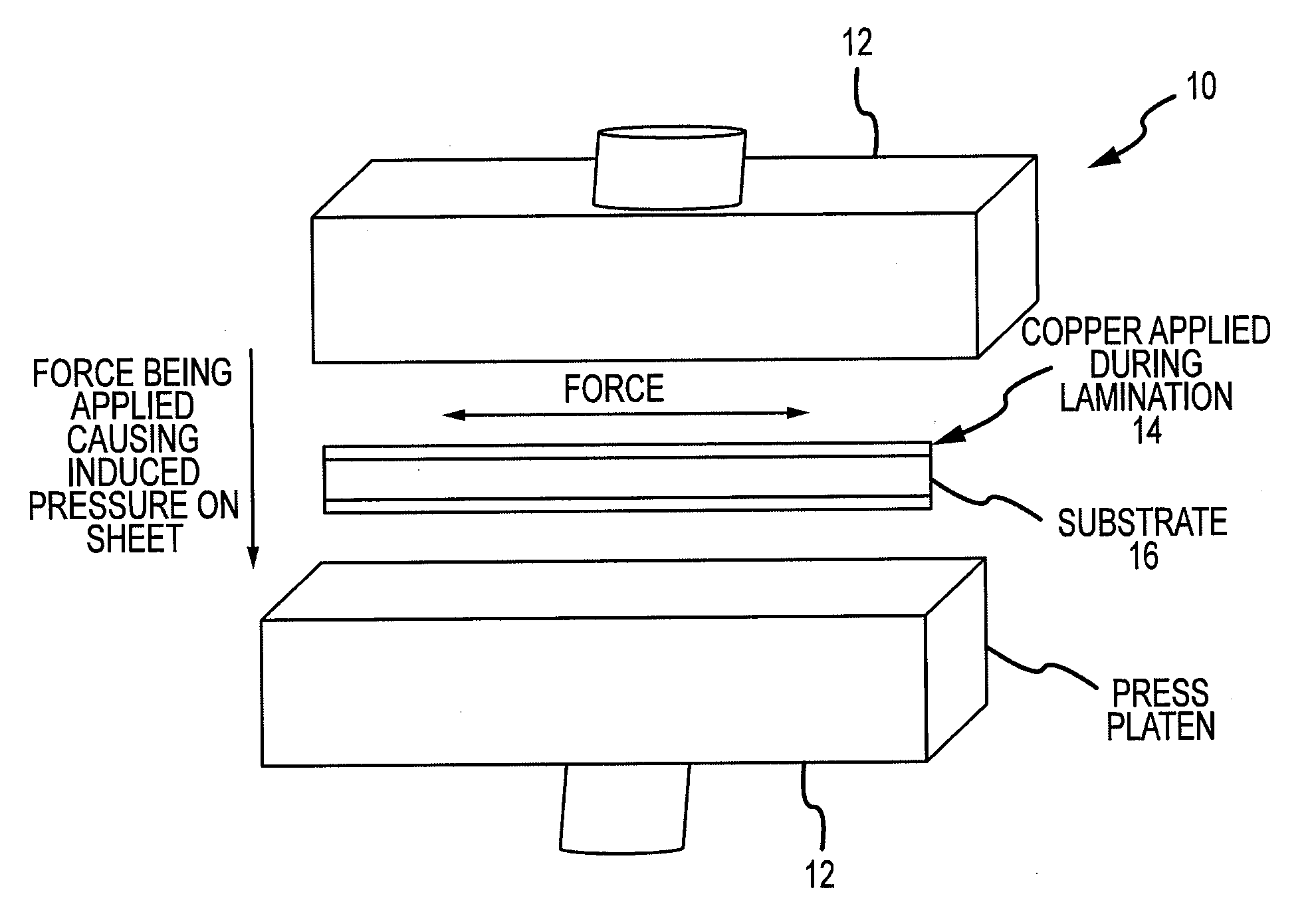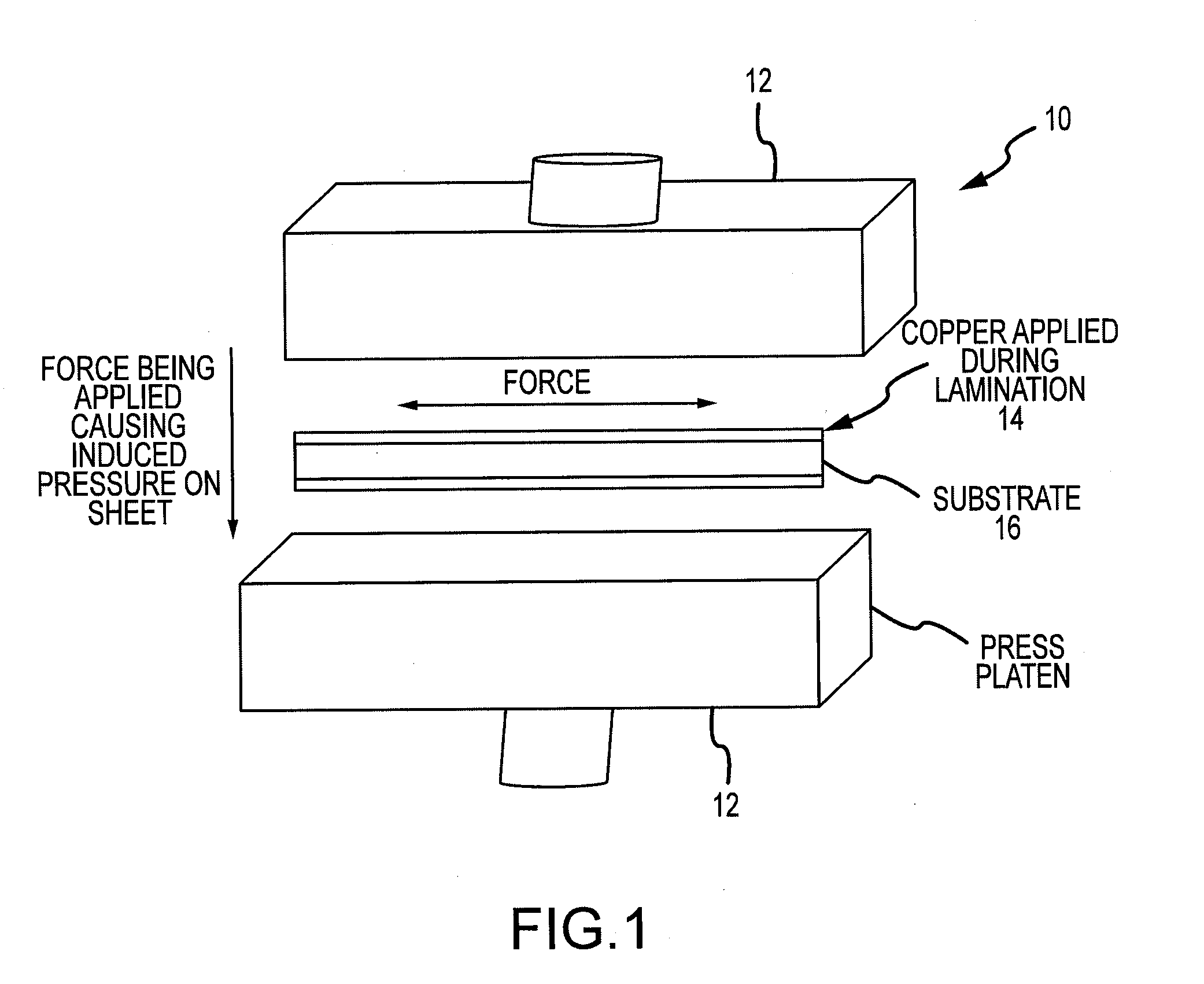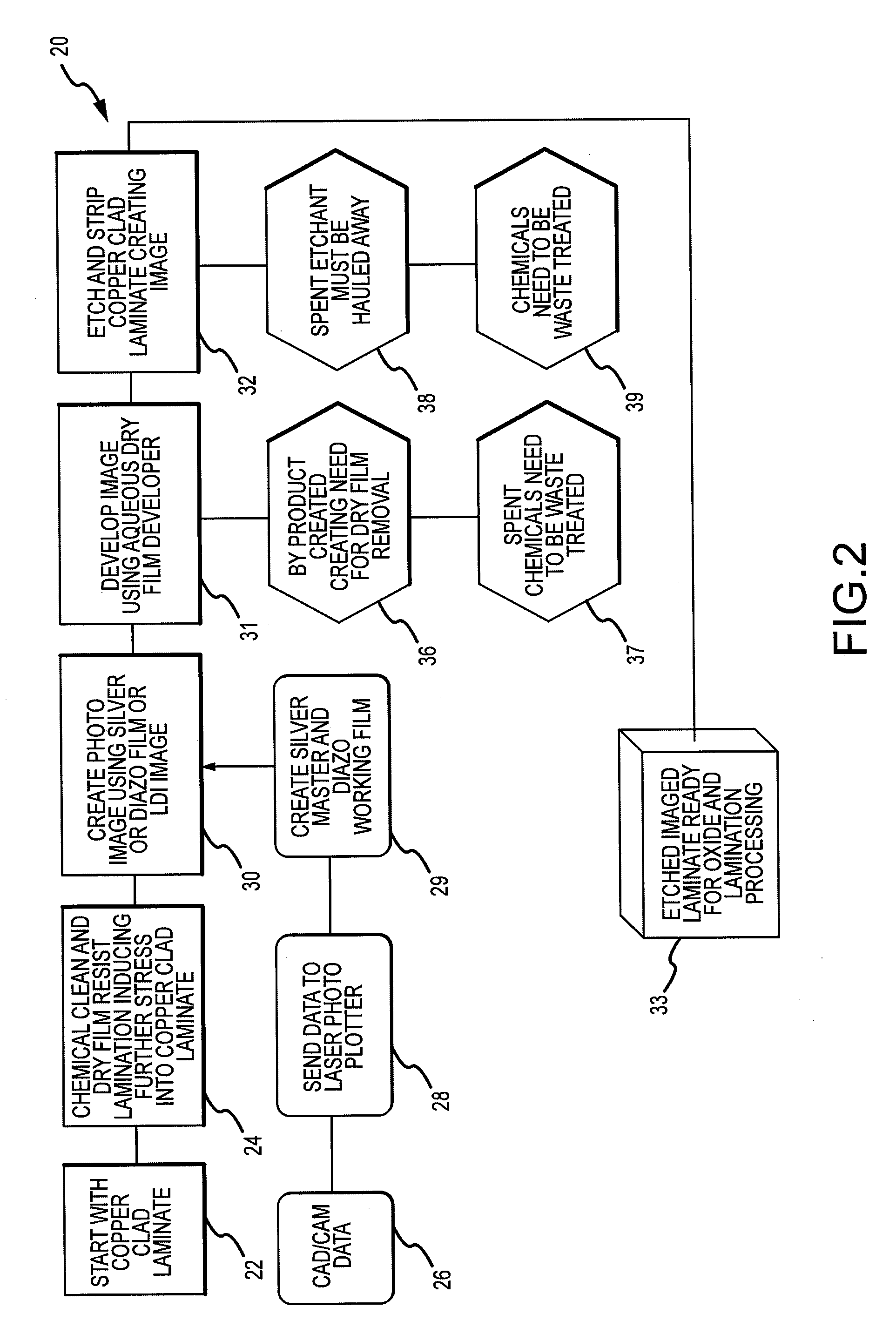Direct emulsion process for making printed circuits
a printing circuit and emulsion technology, applied in the field of printed circuit boards, can solve the problems of “loss” of high-speed rf applications, the prior art process requires several steps, and the limitations of imaging, development, and etching of fine lines
- Summary
- Abstract
- Description
- Claims
- Application Information
AI Technical Summary
Benefits of technology
Problems solved by technology
Method used
Image
Examples
Embodiment Construction
[0018]Methods of the present invention for fabricating printed circuits and printed circuit boards generally include providing a non-metallized substrate, coating the non-metallized substrate, and imaging of a circuit design directly onto the coated substrate. The imaged substrate may then be developed with one or more chemistries and processed by subjecting it to an electroless solution in order to create a printed circuit or printed circuit board having a metal image. It should be understood by those skilled in the art that any type of non-metallized substrate may be used as long as the substrate is uniform for imaging. In addition, those skilled in the art will understand that a number of photosensitive chemicals may be used to coat the surface of the non-metallized substrate and that a variety of chemistries may be used to develop the imaged substrate.
[0019]FIG. 1 is a schematic showing the prior art conventional process 10 for laminating copper to a substrate. A large laminatio...
PUM
| Property | Measurement | Unit |
|---|---|---|
| Length | aaaaa | aaaaa |
| Temperature | aaaaa | aaaaa |
| Sensitivity | aaaaa | aaaaa |
Abstract
Description
Claims
Application Information
 Login to View More
Login to View More - R&D
- Intellectual Property
- Life Sciences
- Materials
- Tech Scout
- Unparalleled Data Quality
- Higher Quality Content
- 60% Fewer Hallucinations
Browse by: Latest US Patents, China's latest patents, Technical Efficacy Thesaurus, Application Domain, Technology Topic, Popular Technical Reports.
© 2025 PatSnap. All rights reserved.Legal|Privacy policy|Modern Slavery Act Transparency Statement|Sitemap|About US| Contact US: help@patsnap.com



